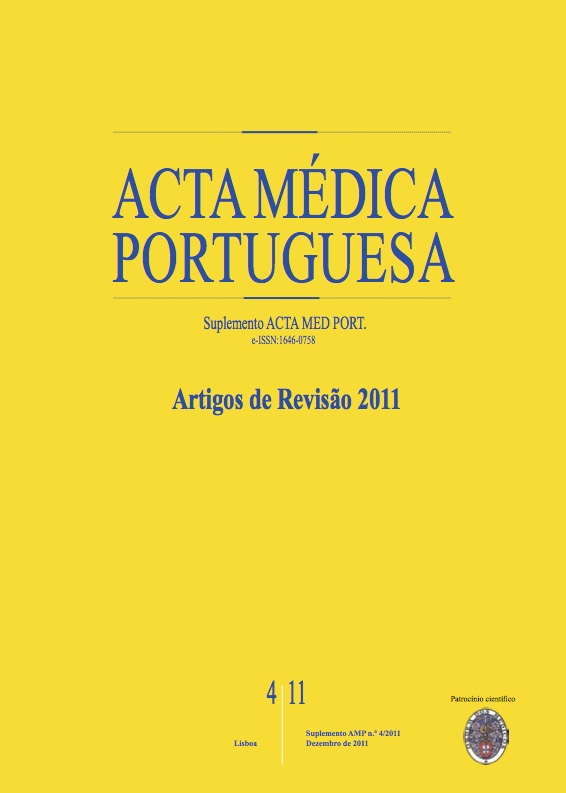O espectro clínico síndrome de Stevens-Johnson e necrólise epidérmica tóxica.
DOI:
https://doi.org/10.20344/amp.1567Resumo
Stevens-Johnson syndrome and toxic epidermal necrolysis are potentially life-threatening adverse cutaneous drug reactions. Clinically, it manifests as a rash, often morbilliform, or atypical target lesions that evolve to epidermal detachment. There is mucosal involvement in almost all patients. The loss of skin's barrier function has important implications in the maintaining of homeostasis in these patients, often determining its internment in Burn Units or Intensive Care Units. The drugs most often involved are allopurinol, antibiotics, including ß-lactams and sulfonamides, anti-inflammatory drugs (NSAIDs) and aromatic anticonvulsants. The clinical manifestations appear on average 7 to 21 days after the onset of the involved drug. The diagnosis is clinical and supported by histopathology, whose main finding is keratinocytes' necrosis and cleavage of the dermo-epidermal junction. The differential diagnosis is carried out with erythema multiforme, acute generalized exanthematous pustulosis, staphylococcal scalded skin syndrome, paraneoplastic pemphigus and graft versus host disease. A timely recognition of these situations is of utmost importance in order to intervene as early as possible. The suspension of the drug believed to be involved is paramount.Downloads
Downloads
Como Citar
Edição
Secção
Licença
Todos os artigos publicados na AMP são de acesso aberto e cumprem os requisitos das agências de financiamento ou instituições académicas. Relativamente à utilização por terceiros a AMP rege-se pelos termos da licença Creative Commons ‘Atribuição – Uso Não-Comercial – (CC-BY-NC)’.
É da responsabilidade do autor obter permissão para reproduzir figuras, tabelas, etc., de outras publicações. Após a aceitação de um artigo, os autores serão convidados a preencher uma “Declaração de Responsabilidade Autoral e Partilha de Direitos de Autor “(http://www.actamedicaportuguesa.com/info/AMP-NormasPublicacao.pdf) e a “Declaração de Potenciais Conflitos de Interesse” (http://www.icmje.org/conflicts-of-interest) do ICMJE. Será enviado um e-mail ao autor correspondente, confirmando a receção do manuscrito.
Após a publicação, os autores ficam autorizados a disponibilizar os seus artigos em repositórios das suas instituições de origem, desde que mencionem sempre onde foram publicados e de acordo com a licença Creative Commons









